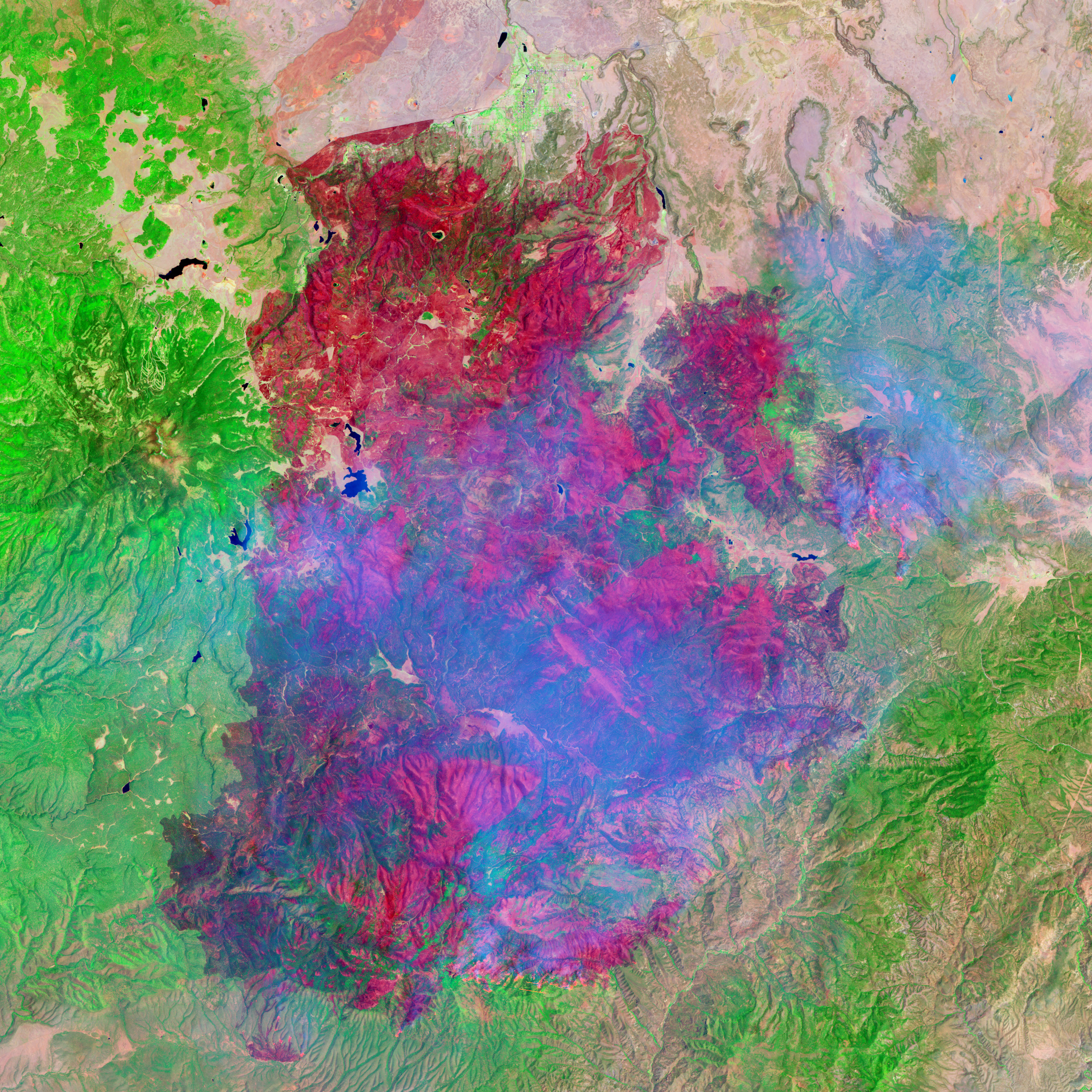Science News
Earth Update - July
July 15, 2011

The Morrison Planetarium’s monthly Earth Update, held as part of “Science Tonight, Live@630” at NightLife, takes visitors on an immersive trip around the world examining current events on our blue planet, including climate, weather, seismic activity and more. The tour is hosted by Ryan Wyatt, director of the Morrison and science visualization here at the Academy, and created by Tim Horn, our producer of climate and earth science visualization.
We like to follow up with an article here, informing our readers about the latest earthly news, starting and ending in our hometown.
Our San Francisco summer weather has returned (foggy, cold) despite rising temperatures across the rest of the country, bringing to mind that famous quote by someone who probably wasn’t Mark Twain.
To escape the cold we head to the arid southwest, not for the recent All-Star Game, but for wildfires, dust storms, and droughts (oh my!). The NASA satellite photo above is an enhanced-color image of the Wallow wildfire, the largest fire in Arizona history, scorching about 841 square miles. The fire began May 29 and was only recently contained.
A dust storm last week provided more stunning visuals but also more bad news for the hot state. Check out a time-lapse on New Scientist of dust overtaking Phoenix. Brandon Keim at Wired explains the reasons for it in his article “Supersize Dust Storms Could Become Southwest Norm”:
The storm resulted from thunderstorm-cooled air plummeting into the ground like mist pouring from an open freezer, only exponentially more powerful. Combine those winds with extremely dry conditions, and the result was a wall of dust 100 miles wide and 5,000 feet high.
Extremely dry conditions because, as reported by the New York Times earlier this week, Arizona is one of fourteen states facing a drought this summer.
From the dry southwest, we head to East Africa where severe drought puts “10 million people at risk” according to Voice of America. In that same area, the Nabro volcano erupted suddenly last month, as we reported here. This week, Physorg.com posted a more recent, more sedate photo of the Eritrean volcano.
From Africa, Ryan and Tim flew to Japan, to revisit the areas hit hard by the March earthquake and tsunami. In addition to continuing aftershocks, four months later the area is still trying to work through the devastation. Although the March 11 earthquake was a severe event, Japan has prepared extensively for that type of seismic activity: the real damage was caused by the tsunami it triggered… Take a tour through this 360˚ image to see the damage up close (NightLife visitors saw it on the dome this way).
Leaving Japan, we take a global view, examining NOAA’s annual State of the Climate report issued two weeks ago. From the Earth Matters blog at Earth Observatory:
…the findings won’t surprise anybody who has cracked a newspaper open in the last decade. Last year was the second warmest on record since official record-keeping began. The world’s glaciers lost mass for the 20th year in a row. Arctic sea ice shrank to its third smallest area on record. I could go and on—NOAA offers details on a total of 41 global climate indicators in the [272-page] report—but the Washington Post already has it covered.
Be sure to read the Post’s coverage and Wired’s short post, “Warmer Weather Is Officially the New Normal,” for more information.
Bringing us back home are two recent articles on the effect of climate change on our California coastline and (gasp!) Napa Valley wine.
What science news did you find down-to-earth this month? Share your thoughts below! And check the NightLife schedule to find dates for upcoming Earth Updates.
NASA Earth Observatory image created by Jesse Allen, using Landsat data provided by the United States Geological Survey